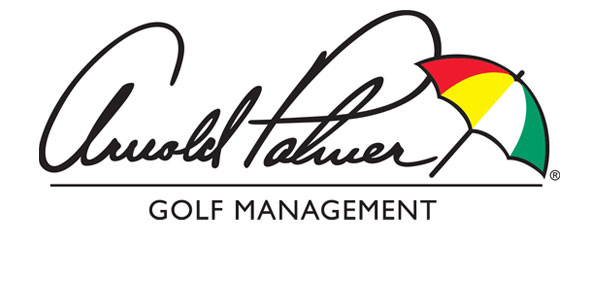Everything to consider about caring for your kids’ teeth some sort of: the healthiness of your child’s teeth is largely dependent on four things: eating routine, oral cleanliness, Tooth beauty products, And the amount and quality of her saliva (which helps rinse away food and bacteria). Since saliva and the strength of her teeth are based mainly on genes and out of your control focus on what you can influence: Eating and cleanup up. The kind of food in your child’s diet and how many times she eats it matters. When sugar and starch connect normal bacteria in the mouth, They could create acids that dissolve the tooth’s structure and cause cavities. extra a child eats sugar and starches (refined snacks are the worst offenders), The more often her teeth face the acids. Eating ordinary healthy meals, Rather than lots of small portions during the entire day, And enjoying water (The fluoridated pleasant, For kids over 1), Will prevent acids from settling on the teeth and stave off tooth decay. While a no snack rule is constructing, Offer more vegatables and fruits, rather than processed treats. equally as crucial: Kids should brush much less twice a day and, would certainly, After snacking, to boot. Keep in mind that an excellent time to brush is before a nap or bedtime because saliva production slows during sleep (It’s linked to hypertension levels and heart rate),
http://www.dentalget.com/category-1934-b0-Micro-Motor-Handpiece.html Giving acids far more probability to damage teeth. Stick to that time frame and children may need fewer fillings than kids who wait until age 2 or 3, Says research conducted recently. from the visit, As long as for anyone who is major problems, The dentist will typically count and inspect your son or daughter’s teeth (Or teeth!), get him used to the office and staff, And talk with you about preventive care. They also often contain a two minute timer that lets your child know when she can stop brushing. If you choose a good model, Make sure your pre-teen doesn’t apply too much pressure when she’s using it. If she is performing, The head of the brush may not rotate and won’t be as effective. no matter what kind of brush you pick, Be sure that she’s getting to those hard to reach places in the rear of her mouth; This might require a little bit more help from you until she’s 5 or 6 years old. q: Should my child get dental sealants to avoid cavities? another: They’re no replace good oral hygiene. But sealants thin plastic barriers that are painted onto the chewing surface of the back teeth can help fend off decay if your child has deep grooves in his molars. germs, plaque, And food particles can get into those grooves and are challenging to remove with a toothbrush. Though some research supports using sealants as a routine part of dental care for babies, Baby teeth are less likely to be heavily grooved, And many insurance agencies will pay for sealants only on adult teeth. If a small amount of (Or all the) Of your kid’s permanent teeth are in, speak to your dentist about whether he recommends sealants. there is no drilling or anesthetic required, They won’t show when your grandchild talks or smiles, And they aren’t painful though he might feel them with his tongue at first. value vary; If you have dental insurance plans, find out if sealants are covered. queen: I see a lot of natural toothpastes in the store these days that don’t contain fluoride. Are they OK need to to use? any kind of a: While fluoride safeguards enamel, Non fluoridated toothpastes are fantastic for kids who can’t yet spit. as to the reasons? Swallowing fluoride and getting too much of it can cause fluorosis, which then stains on the enamel of permanent teeth. (What’s vital, Whichever toothpaste selecting, Is the action of brushing teeth, Which does you will find many cleaning.) When your child’s old enough to spit, speak to your dentist; She may be getting plenty of fluoride through tap water, Fluoride possibilities, And meal. Also remember: Infants under 1 do not need fluoride and are particularly vulnerable to fluorosis. The ada recommends that you
dental curing lights use water that has no fluoride, Or only a low-level of it, For formula that ought to be reconstituted. Best bets are filtered, Deionized, Demineralized, Distilled, Or reverse osmosis tv water. The physical motion of chewing produces more saliva, which will help neutralize pH balance to prevent cavities. And reports have shown that xylitol, a perfect sweetener that tastes like sugar, May suppress the increase of bacteria in the mouth. with regard to children under 4, some kind of gum is a choking hazard. But very young children can still reap the benefits of xylitol: If Mom chews it during her motherhood and up to two years postpartum, Her child’s less likely to develop tooth decay as time goes on (The bacteria that induce it are often passed from mother to baby through kissing or sharing food). q: My young child grinds his teeth. Should I be anxious? an absolute: Tooth milling (Bruxism) Happens typically in young kids. As your son or daughter’s mouth grows and changes, He may grind his teeth you are able to comfortably align them with his jaw. While it can harm the enamel on baby teeth, many of them fall out before it becomes a problem. And experts say it’s uncommon for grinding to do serious harm to permanent teeth your habit usually goes away on its own by age 6. if you’re still worried, Or your kid hasn’t outgrown it by then, talk to your dentist. She may suggest a mouth guard to wear before bed, Or she may refer you to a myofunctional consultant, Who can work with him to balance the muscles in the mouth and get at the main cause of the grinding. It will help your baby get used to the of brushing, And sometimes there’s a small opening in the gum prior to the tooth erupts a perfect hiding place for bacteria, that the gauze will wipe away. Dentists say it may even have the added benefit of making teething more well-off for your baby, Since as you’re cleaning you’re also massaging the gums. queen: What are the best kinds of fillings for children and are there any new, Less painful ways to drill the actual? one specific: Often in involves aesthetics. "If you have a child walking around with metal crowns, It’s quite normal for other kids to start teasing him, states Dr. Pirnazar. And you’ll realize there are practical issues: Filling a cavity with blend (A tooth colored article content made of quartz and resin) May take up to 40 minutes dissimilar to about ten minutes for an amalgam (metal) Filling which is
http://www.dentalget.com/ a challenge when the affected person is a wiggly kid. also, Composite restorations do not require the dentist to drill as much. And even though ADA maintains that the mercury content in metal fillings is safe, this has been debated, And some parents want to skip them. Laser surgery is the new way to drill and is said to be less painful, Though
autoclave sterilizer it’s not yet acquireable. Because the tools is expensive, If your dentist offers laser positioning, Ask whether there’s a bonus fee for it. q: How is a pediatric dentist completely different from a family practice dentist? a functional: Pediatric dentists receive additional training in caring for children’s oral health. And they make their offices child friendly by offering videos, one-of-a-kind chairs, and / or music. The caveat: Since pediatric dentistry is a customizable, There may be fewer providers to pick from in your area. at last, while, Sizing up any prospective dentist releates to this: How does she relate to them? Is she skilled? Does she focus on your concerns? the answers to these questions are more important than her title. copy in whole or in part without permission is prohibited.








